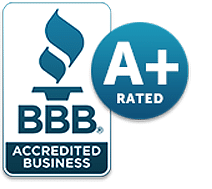The Rotational Molding Process
Last updated Thursday, May 26th, 2022
Plastic products – such as Plastic Jersey barriers used for highway and construction site safety – which are produced via the rotational molding (also called rotomolding) process exhibit strength, durability, and corrosion-resistance. For many product applications, this process is the most economical manufacturing method, resulting in cost efficiencies which can be passed onto the purchaser of the product.
Other product produced via rotational molding include furniture components, toys, dolls, fuel tanks, water treatment tanks, playground equipment, newspaper vending boxes, and bowling equipment.
What is rotomolding?
The rotational molding process is used to create large, one-piece, hollow plastic parts. The process delivers seamless parts with uniform wall thickness.
During rotational molding, the heating, melting, shaping, and cooling stages all occur after the polymer powdered resin is placed in the mold. The mold is heated and rotated simultaneously, which distributes and fuses the resin on the mold’s inner surface. This even coating of resin enables the producer to control the wall thickness.
Polyethylene is the most widely used plastic material in rotomolding processes.
The four-step process consists of these stages:
Loading: A measured quantity of resin is loaded into the mold.
Heating: The molds are placed in an oven and rotated slowly, both vertically and horizontally. The heat penetrates the mold, and the resin becomes fused to, and evenly coats, the entire surface.
Cooling: The mold continues to be rotated, as air (usually from a fan) and/or water spray cools it.
Unloading: The finished part is removed from the opened mold.
The speed of the rotation, as well as the heating and cooling times are controlled throughout this entire process. No external pressure is applied during rotational molding, resulting in a stronger finished product. Only a minimal amount of material is wasted during this process (and any excess material can often be reused), making rotomolding a relatively inexpensive and environmentally-friendly process.
Benefits of Rotational Molding
Rotomolded products are significantly lighter than steel, aluminum or fiberglass. The process results in parts which have a consistent wall thickness and strong, stress-free outside corners, making them able to absorb shocks. The products are corrosion and decay-resistant, and colors are molded onto the part, so they never crack or chip off.
Compared to other molding alternatives (such as injection and blow molding), rotational molding can produce large and small parts more cost effectively. Labor and surface-finishing costs are lower. The end products are less expensive to ship.
Summary
The rotational molding process is an economical method for producing large plastic products such as plastic Jersey barriers. The resultant products are strong, durable, and cost-effective.


